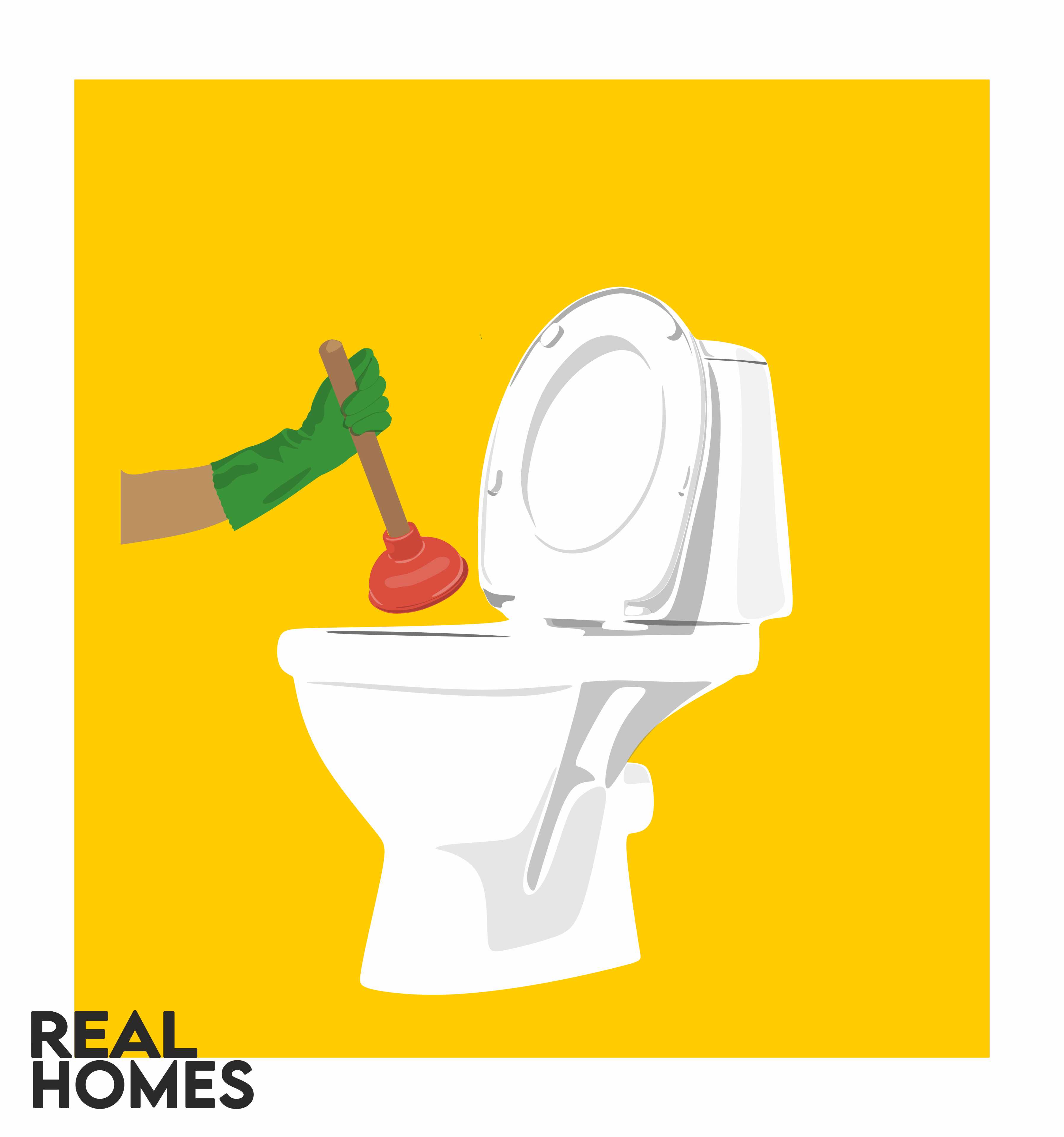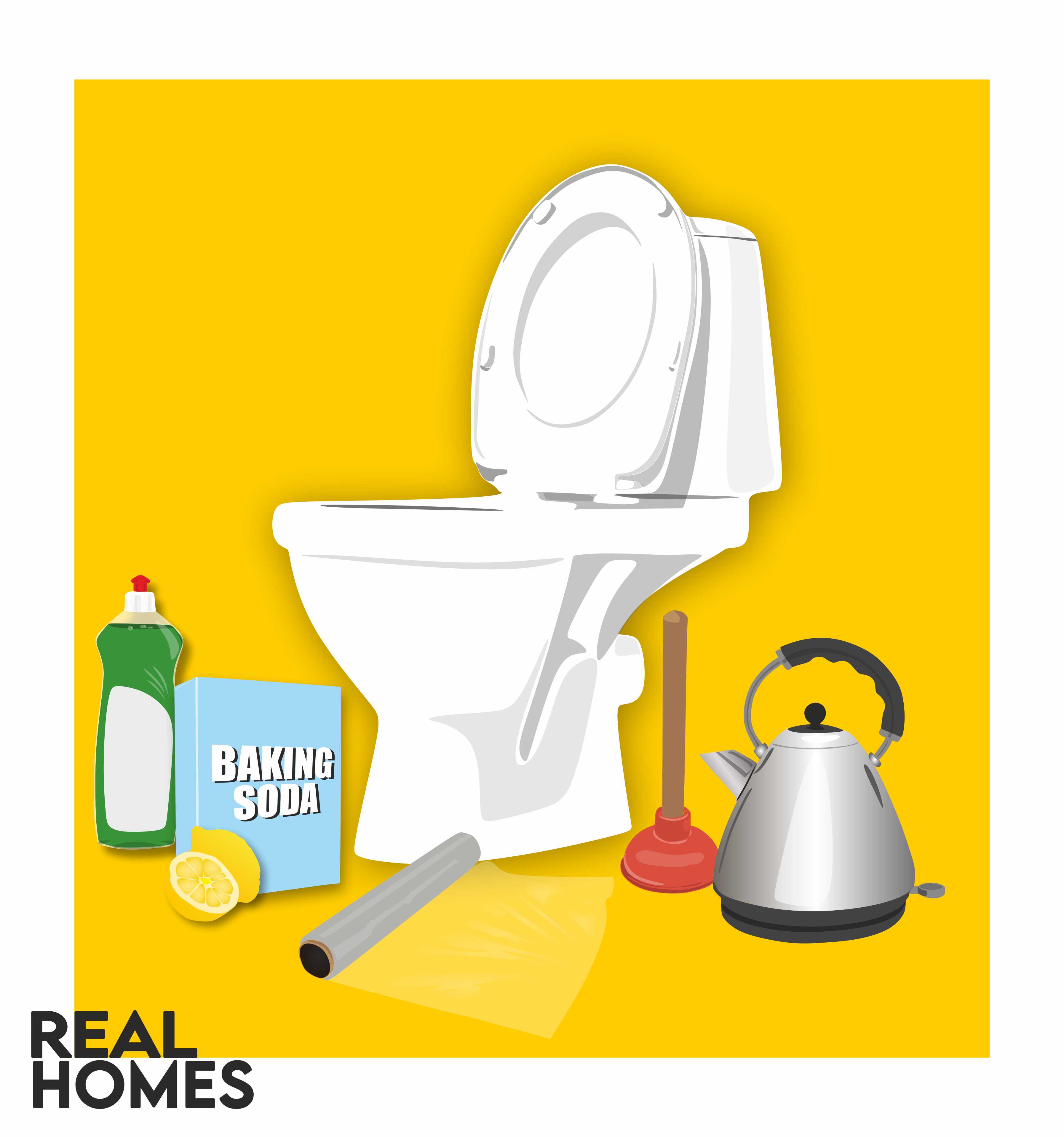How to plunge a toilet and unclog it for good
Learn how to plunge a toilet correctly, according to plumbing experts plus what other tools and methods can help your situation.


Anna K. Cottrell
Everyone will need to know how to unclog a toilet with a plunger at some stage. Having to learn how to plunge a toilet for the first time can be daunting, but, fortunately, it's a simple task. So, even if your toilet is overflowing, don't panic. In several easy steps, you can unblock a toilet without having to call an emergency plumber.
A plunger is an essential tool in any bathroom. Even stubborn blockages can be dislodged if you know how to use it correctly. Of course, unblocking a toilet with a plunger can be a messy job so you will want to know how to clean your toilet properly once you've unclogged it.
Keep reading to tend to your toilet, and to get clued up on how to avoid a repeat blockage in the future – with a couple of helpful tips from the experts, your toilet will be free from blockages in no time.
How to plunge a toilet
Before you do anything else, make sure you have the right kind of plunger for the job. Cleaning expert Emma Barton explains: 'A standard plunger that looks like a half-cut ball will never plunge your toilet. Period! The oval shape of the plunger isn't
a great fit for the toilet drainage outlet. It's like a terrible Tinder
date. Swipe left instantly! However, it's great for bathtubs, sinks, and
floor water outlets, but not for toilets.
'A plunger with an extended flange (can be purchased on Amazon) is the only savior for your toilet. The extended flange will form a perfect unbreakable seal with the drainage outlet. With an unbreakable seal comes high pressure that'll unclog your toilet in a flash.

Now that you've got the right plunger, you can begin the job. Experienced plumber and general manager of John The Plumber Jake Romano summarizes his preferred method for plunging a toilet:
1. Insert the plunger into the toilet water at an angle to allow water to
enter the plunger.
Get small space home decor ideas, celeb inspiration, DIY tips and more, straight to your inbox!
2. Place the lip of the flange plunger into the hole at the
bottom of the toilet bowl.
3. Press down repeatedly. Don't be shy here! Quick
plunging in and out.
4. After you've plunged all the water out of the bowl, flush!
It really is that simple provided your toilet is clogged but not filled with water. If your toilet bowl is full, you'll need to try something else.

Emma Barton is a self-confessed 'clean freak' and the driving force behind
Steam Clean Queen, where she shares cleaning tips and advice on the best
steam cleaning equipment available. Emma unashamedly believes the steam
cleaner to be the best cleaning device ever invented.
Can you plunge a toilet full of water?
That depends on how full the toilet is, but we wouldn't recommend it. Romano cautions that 'plunging will shake up the water and cause splashback. If the toilet is full to the brim, you will make a mess. Under those circumstances, remove some of the water with a bucket or some other means.'
If you're not sure what to use in this case and you have some experience with plumbing, try an accordion plunger. Barton says that 'going in with an accordion plunger in a half-filled bowl is a trick many plumbers and cleaning crew use. But don't take the accordion plunger for granted. *There's quite a learning curve with this type of plunger, but when you get the hang of it, no clogged toilet will live to
tell the tale.'
Do you plunge a toilet while flushing?
No, but you do need a bit of water in the bowl to plunge. According to Romano,'If the toilet is empty, I would flush it so there is some water in the bowl. But you're not flushing the toilet so that you can plunge while it's flushing. You're only flushing it so there is water to push with the plunger. If the toilet is flushing while you're plunging, you might make a mess.'
How do you unblock a badly clogged toilet?
Romano's top tip is to not be shy with the plunger. 'You may need to plunge up and down 20+ times. That being said, if there's really no give, be careful. Plunging too wildly can break your seal.''
The experts at plumbworld highlight the importance of knowing what type of toilet blockage you're dealing with. 'If you have the first type - slow drainage - it is easy to clear. However, don’t wait for your toilet to become blocked. Early action and regular cleaning are vital for avoiding blockages.' For more severe blockages where your toilet is filled with water, 'transfer as much water from the toilet bowl into a separate bucket before attempting to unblock it'.
Ryan Thompson, a Miami-based plumber of Plumbing Informer says, 'One of the easiest ways to unclog a badly clogged toilet is by using a drain snake. When methods like pouring hot water or dish soap down the toilet don't cause the clog to unjam, a physical tool like a drain snake is needed.' You may find that using a plunger and a drain snake will give you the best result in the case of a stubborn blockage.

Alternative methods
Using hot (not boiling) water is a good way to unclog a toilet without a plunger and it's one of the easiest, hands-off methods of doing so:
- To unblock a toilet using just hot water, start by boiling the kettle.
- Wait a few minutes after the kettle has boiled, pour the hot water into the bowl and leave it to sit for three minutes.
- Then, flush.
- This might be enough to soften and push through any blockage, especially if a light blockage. Use this method together with the plunger if needed.
If you're keen to avoid chemicals, Romano says, 'I'd use the hot water and dish soap trick I mentioned above. This works surprisingly well. Other people might say lemon juice or vinegar and baking soda... But, in my experience, dish soap and hot water does the trick.'
How to unclog a toilet pipe
Try to clear a toilet pipe using a plumber's rod or drainage rod, or use the Silverline Store Auger toilet unblocker sold at Amazon. The blockage is likely to be in the toilet pipes if nothing is visually blocking in the toilet bowl.
A wire coat hanger or long piece of stiff wire can also be bent into a wide curved and pushed into the toilet to unblock it if you don't have a drainage rod. Move it about gently, ensuring it doesn't get lodged or scratch the ceramic. This might be enough to clear the blockage. Flush gently to check.
Don't do this if you have a toilet with a macerator – it might be that the toilet is not blocked, but that it just won't flush because there's something caught around the mechanism.
How to deal with blockages in a soil pipe
If you can't see the blockage in your toilet, and the drain (usually sited at the front of your house, just on the property line with the pavement) isn't full of water, the blockage might be in the soil pipe. In this case you'll need to call in a professional to jet the pipe clean. If the blockage seems to be in the soil pipe between your property and the drain beneath the road, you'll need to call your local water company.
Things you should never flush down the toilet
If you're wondering 'why is my toilet blocked all the time?', it could be as simple as having flushed down items that simply don't belong in the loo.
Toilets can often get clogged up because they have something thrown down them that they're not meant to cope with, so the easiest way to prevent a blocked toilet is never to flush the following:

- Too many tissues: If you're using a lot of tissue paper to blow your nose for example, don't throw all 20 of them down the loo; just put them in your bin instead to keep your bathroom clean and your toilet clear of blockages.
- Cotton pads/balls and cotton earbuds: All of these things are guaranteed to clog your toilet; just bin them instead.
- Sanitary pads: Sanitary pads should never be thrown down the toilet.
- (Flushable) wipes: Some companies claim their wipes are flushable, when in reality they aren't. Stay on the safe side and dispose of them hygienically in a bin – they will eventually clog a toilet.
- Coffee grounds: Ground coffee compacts, and after a while will cause a toilet blockage or (worse) pipe blockage further down the line. Used coffee grounds from your French press should always be put in your compost bin.
- Food: If you ever use your loo as a food waste disposal system (we're sure this isn't a regular thing, but on the off chance), don't, as it's only a matter of time before it gets blocked.
- Cat litter: Not all cat litters can be flushed down the toilet, so be sure to check the packaging before you do – and we wouldn't recommend making a habit of this.
Will a toilet eventually unclog itself?
Now you know how to unclog a toilet, it's worth asking – will it ever just fix itself?
'It often does,' says Romano. 'It really depends on the matter that is making the blockage, and how badly stuck it is. For example, a blockage caused by a plastic toy is likely going to be stuck for a long time. That being said, sometimes a toilet clog unclogs after a day of just sitting there.'
Your toilet unblocking essentials
Now, you can breathe easy – knowing your toilet is good to go once more.

Lucy is Global Editor-in-Chief of Homes & Gardens having worked on numerous interiors and property titles. She was founding Editor of Channel 4’s 4Homes magazine, was Associate Editor at Ideal Home, before becoming Editor-in-Chief of Realhomes.com in 2018 then moving to Homes & Gardens in 2021. She has also written for Huffington Post, AOL, UKTV, MSN, House Beautiful, Good Homes, and many women’s titles. Find her writing about everything from buying and selling property, self build, DIY, design and consumer issues to gardening.